Introduction to Shallots
In the vast world of culinary delights, there’s a certain bulbous vegetable that has been a cornerstone in many dishes but often remains under the radar: the shallot. Unlike its more famous relatives – onions and garlic – shallots bring a unique combination of flavors and benefits to the table.
Originating from Central or Southeast Asia, the shallot is an integral part of various cuisines around the globe. Its mild, slightly sweet taste with hints of garlic makes it a versatile ingredient favored by chefs and home cooks alike. Shallots are not just about flavor; they’re a powerhouse of nutrients, offering numerous health benefits.
In this manual, we will explore the realm of shallots extensively, exploring their history, the differences between them and other similar vegetables, and the numerous ways in which they can be used in the kitchen. Whether you’re a seasoned cook familiar with shallots or someone curious about incorporating them into your diet, this comprehensive guide will shed light on everything you need to know about this remarkable vegetable.
Stay with us as we embark on this culinary journey, unveiling the secrets and benefits of shallots and how they can elevate your dishes to new heights.
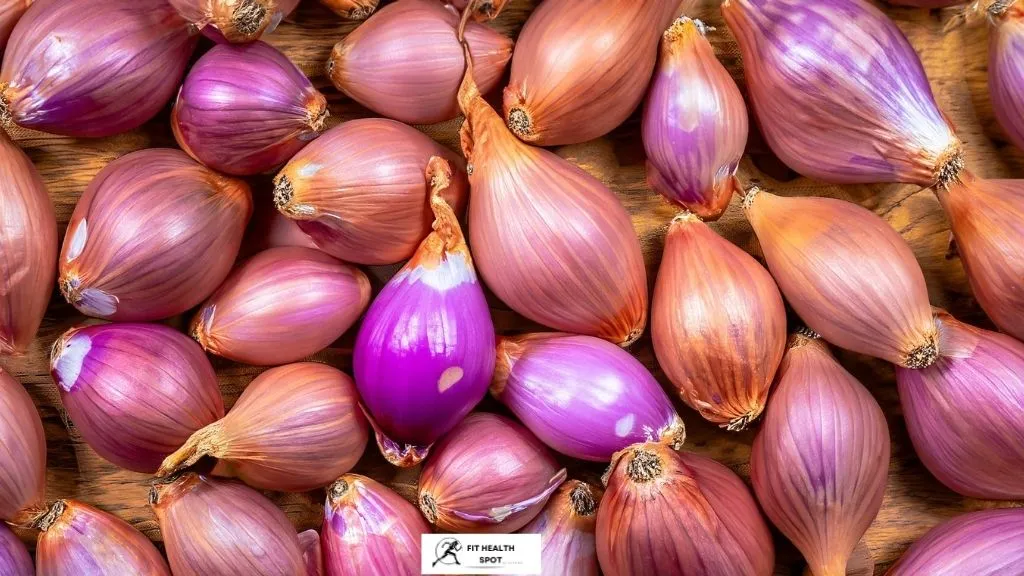
What Are Shallots?
Shallots, scientifically known as Allium cepa var. aggregatum, are part of the Allium family, making them close relatives to onions, garlic, and chives. Though they may look like tiny onions, shallots possess a unique flavor profile that distinguishes them — an intricate combination of sweetness and pungency with subtle hints of garlic.
Brief History and Overview of Shallots:
Historically, shallots can trace their roots back to Central or Southeast Asia. Ancient texts and scriptures from various civilizations, including the Indian and Egyptian cultures, have mentioned the use of shallots. As traders and explorers roamed the ancient world, they introduced shallots to new lands, ensuring their spread and integration into various cuisines.
The bulb of the shallot often divides into multiple cloves, much like garlic. Each clove is encased in a thin, papery skin that can range in color from golden brown to deep purple. Unlike regular onions, which grow as single bulbs, shallots tend to form clusters of bulbs.
The versatility of shallots makes them a favorite in many dishes. They can be used raw in salads, pickled for an extra zing, or cooked to bring depth and richness to sauces, stir-fries, and more.
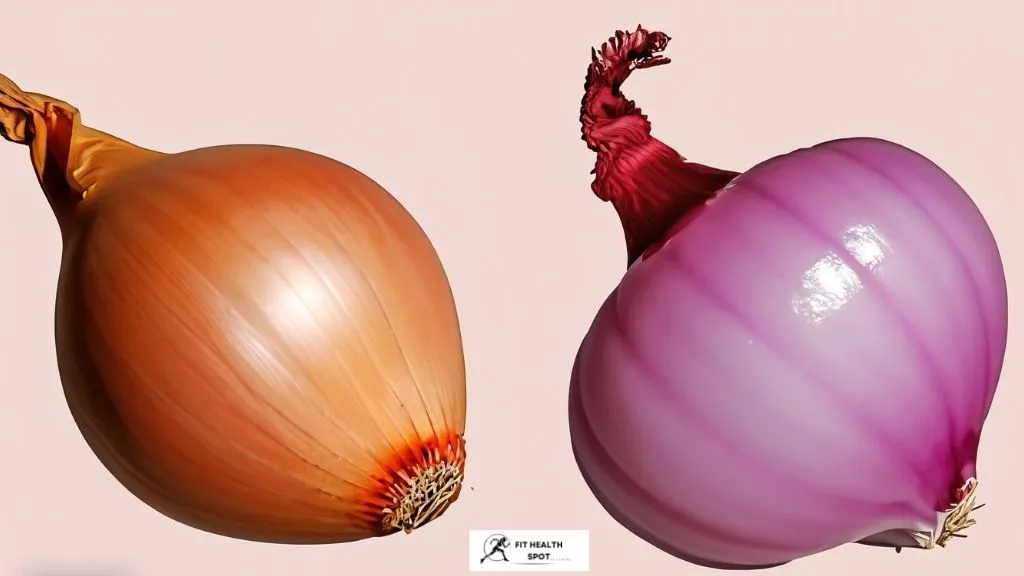
Shallot vs. Onion: The Key Differences
While shallots and onions share the same family tree and have overlapping uses in the culinary world, they boast distinct characteristics that make them unique in their own right.
Texture and Structure:
At first glance, a shallot appears as a smaller, elongated onion. However, once peeled, its multi-clove structure becomes evident, resembling garlic more than onions. Onions, in contrast, grow as a single bulb.
Flavor Profile:
Shallots have a delicate flavor that marries the sweetness of onions with the sharpness of garlic. Their taste is less intense than that of onions, making them ideal for raw preparations like salads and vinaigrettes. Onions can be more intense, especially when consumed raw, and have a tear-inducing quality which is absent in shallots.
Culinary Uses:
Shallots tend to soften quicker than onions when cooked, making them perfect for sauces and gravies where a subtle, melt-in-the-mouth texture is desired. Onions, with their robust structure, are often used in recipes requiring longer cooking times or when a crunch is needed.
Shallots in the Culinary World
Due to their refined flavor, shallots are highly valued in gourmet cooking. From classic French sauces like béarnaise and mignonette to Southeast Asian dishes, shallots are a cornerstone ingredient, imparting a depth of flavor that’s irreplaceable.
Spicy Shallot Delicacies
Spice aficionados adore shallots for their ability to soak up and complement hot flavors. Think of spicy shallot chutneys or sambals, where the sweetness of caramelized shallots balances the heat of chilies, creating a harmonious burst of flavors on the palate.
Fat Shallot: Understanding the Term
“Fat Shallot” might raise eyebrows, but it’s often a term used colloquially. It usually refers to a particularly plump shallot bulb or sometimes to a dish or preparation where shallots play a starring role, bringing richness and depth.
The Versatility of Shallot in Recipes
The adaptability of shallots is remarkable. They can transition from being the main attraction in a dish to a subtle background note with ease. Whether caramelized to perfection atop a steak, minced in a tartare, or simply roasted to accompany a roast, shallots are culinary chameleons.
Shallot Pasta
Pasta and shallots? A match made in heaven! The subtle sweetness of shallots complements the robust flavors of a pasta dish. Whether it’s a creamy Alfredo or a zesty aglio e olio, adding shallots can elevate the taste profile manifold. Dive into this delectable pasta guide to explore more.
Fried Shallots
A garnish that’s revered globally, fried shallots bring a crispy, sweet, and slightly bitter element to dishes. From topping Southeast Asian soups to being sprinkled on Middle Eastern pilafs, these golden-brown beauties can transform a dish from ordinary to exceptional.
A Guide on How to Cut a Shallot Efficiently
Cutting a shallot may seem straightforward, but mastering the technique ensures uniform slices or dice that cook evenly and integrate seamlessly into your dishes. Here’s a step-by-step guide to help you ace the art of cutting this petite bulb:
- Preparation: Begin by placing the shallot on a clean, flat surface. Using a sharp knife, cut off the top part (not the root end) and remove the outer papery skin.
- Halving the Shallot: Position the shallot so the root end faces you. Make a vertical cut, halving the shallot but keeping the root intact. The root helps hold the shallot together as you chop.
- Slicing: Lay one half of the shallot flat side down. Make vertical slices, moving from one side to the other, ensuring you don’t cut through the root.
- Dicing: Rotate the half shallot 90 degrees and make horizontal cuts, again refraining from cutting the root. This will produce fine dice perfect for sautés, dressings, and more.
- Mincing: If the recipe calls for minced shallots, simply gather the dice and run your knife through them several times, achieving a finer chop.
- Storage: If you find yourself with excess shallots after chopping, you can preserve them in an airtight container in the fridge for a few days.You can also freeze them for longer storage, but remember they may lose some of their crunch upon thawing.
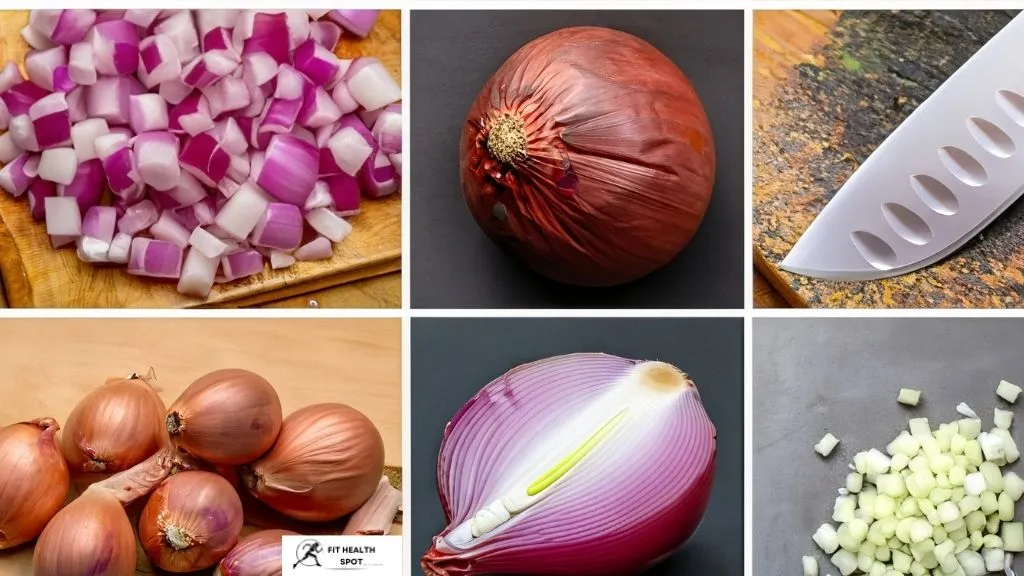
Incredible Health Benefits of Shallots
Shallots, often mistaken for a smaller version of the common onion, have a long-standing history of not just adding flavor to dishes but also bringing numerous health benefits to the table.
Shallot Benefits
Shallots are a powerhouse of antioxidants. They contain allicin, which has been studied for its potential in reducing cholesterol and blood pressure levels. Moreover, they have anti-inflammatory properties, which can be beneficial for those with ailments like arthritis. The quercetin in shallots has been shown to have potential anti-cancer properties and the presence of potassium aids in stabilizing blood pressure.
The essential role of folate found in shallots lies in its support for DNA synthesis and repair, crucial for promoting a healthy pregnancy and decreasing the likelihood of neural tube defects in newborns. Furthermore, shallots can be a good source of dietary fiber, which aids in digestion and ensures that your gut health is maintained.
Speaking of digestion, another superfood known for its digestive benefits is the green papaya. Both shallots and green papaya offer a range of health benefits that complement each other well.
Deep Dive into Shallot Nutrition
The nutrition that shallots provide is surprisingly dense for their size. They are low in calories but high in beneficial nutrients like vitamins, minerals, and antioxidants. One medium shallot provides a considerable portion of your daily vitamin C, B6, and manganese needs. Plus, they are a source of iron, which can be crucial for those with anemia or those who are looking to boost their blood health.
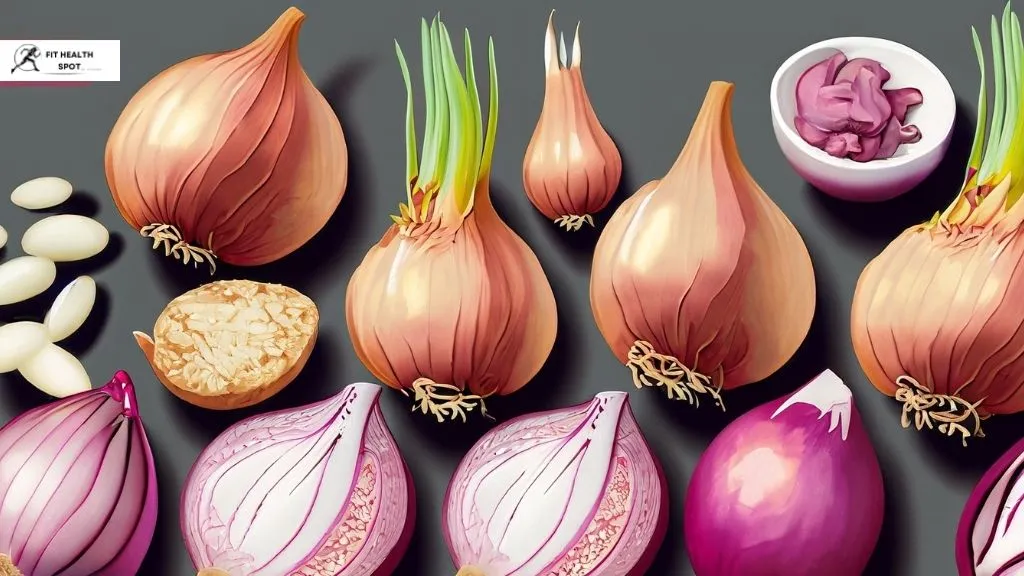
Using Shallots in Diverse Recipes
The culinary world is vast and versatile, and the use of shallots in cooking has spanned across cultures and continents. Their mild yet distinctive flavor makes them an excellent choice for a variety of dishes, both traditional and contemporary.
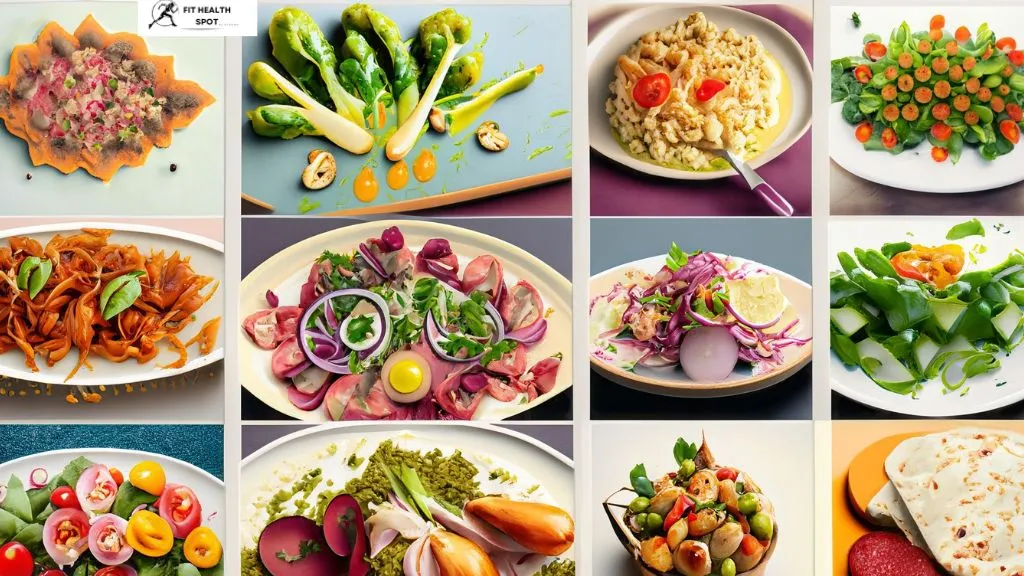
Shallot Pasta
Pasta and shallots make for a delightful combination. Imagine a plate of al dente pasta tossed in a creamy sauce with caramelized shallots, a pinch of fresh herbs and a hint of parmesan.This dish represents comfort food at its finest, combining the gentle sweetness of shallots with the richness of pasta. Whether you’re whipping up a simple aglio e olio or a more elaborate carbonara, adding shallots can elevate the dish’s flavor profile.
Other Popular Shallot Recipes
Aside from pasta, shallots are often used in stir-fries, roasts, and even as a crispy topping for biryanis and pilafs. Their ability to absorb the flavors of the dish while imparting their unique taste makes them a favorite. When fried, they turn into crispy golden bits, perfect for garnishing. In gravies and sauces, they lend a depth of flavor that is subtly different from regular onions.
Have you ever tried using shallots in a salmon dish? The combination of the soft, succulent texture of salmon with the aromatic presence of shallots can be delightful. Find out more about how ingredients like shallots can enhance dishes in this guide on smoked salmon and similar ingredients used in recipes.
Drinks and Shallots? The Connection
When you think of refreshing beverages, shallots probably aren’t the first ingredient that comes to mind. Yet, in the ever-evolving world of culinary innovations, even the most unexpected ingredients find their way into our drinks, adding unique flavors and health benefits.
Green Tea Shots with Shallot Essence : https://fithealthspot.com/green-tea-shots-benefits-secrets/
Marrying the antioxidant-rich properties of green tea with the subtle, aromatic essence of shallots creates a tantalizing drink that’s not just a delight for the taste buds but also a health elixir. Green tea, known for its metabolism-boosting and anti-aging properties, gets an interesting twist with a hint of shallot, adding layers of flavor and health benefits. The blend can potentially harness the combined antioxidant power of both ingredients, providing detoxifying effects and promoting overall well-being. Explore the fascinating world of green tea and its myriad benefits in our detailed green tea shots guide.
Concluding Thoughts
Shallots, with their versatility and myriad health benefits, are a testament to the beauty of nature’s provisions. From spicing up our dishes to potentially enriching our drinks, they challenge culinary boundaries, emphasizing the need for creativity and open-mindedness in our diets.
The Importance of Diet Variety
A varied diet is not just about tantalizing our taste buds; it’s about ensuring we intake a range of nutrients vital for our health. Ingredients like shallots play a key role in diversifying our meals and making nutrition enjoyable. Alongside incorporating diverse foods, understanding different dietary practices can also offer insights into holistic health. Discover the role of intermittent and dry fasting in our dietary routines in this comprehensive guide on fasting.
References & Further Reading
- The Health Benefits of Buckwheat Flour: Read more
- Unlocking the Nutritional Secrets of Oat Bran: Dive in
Frequently Asked Questions (FAQs)
How to slice shallots?
Start by cutting the top and bottom of the shallot. Then, slice it in half vertically and peel away the skin. Lay the cut side down and make even slices across the width.
Can I use onion instead of shallot?
Yes, onions can be a substitute for shallots, but they have a stronger flavor. Use less onion if replacing shallots, and consider the dish’s desired taste.
What is one shallot?
One shallot typically refers to a single bulb. Depending on the variety and size, a shallot can have multiple cloves, similar to garlic.
How to mince a shallot?
After peeling the shallot, slice it thinly. Then, make small, closely spaced cuts in a crosshatch pattern, and finally, chop across the width to produce fine pieces.
Is a Shallot an onion?
Yes, shallots are part of the onion family, but they have a milder and slightly sweeter flavor compared to regular onions.
Where can I find information on shallot nutrition?
Shallots are rich in antioxidants, vitamins, and minerals. For a detailed breakdown of their nutritional content, refer to our section on “Deep Dive into Shallot Nutrition” in the main article.
